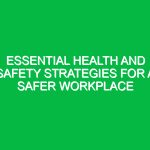Today, we are here to discuss an important topic that affects all of us in our daily operations: Diesel Exhaust Dangers and Safeguards in the context of Health, Safety, and Environment (HSE). It’s crucial to understand the risks associated with diesel exhaust and the measures we can take to protect ourselves and our colleagues. Let’s dive into this Toolbox Talk to ensure a safe working environment for everyone.
Diesel Exhaust Dangers and Safeguards
When working with diesel-powered equipment, it’s essential to be aware of the potential dangers posed by diesel exhaust. Diesel exhaust contains harmful substances, such as carbon monoxide, nitrogen oxides, and particulate matter, which can have serious health implications if not properly managed.
Potential Hazards
Exposure to diesel exhaust can lead to respiratory issues, cardiovascular problems, and even cancer in the long term. It’s important to minimize exposure and implement safeguards to protect ourselves. This includes proper ventilation, using personal protective equipment (PPE), and maintaining equipment in good working condition.
Best Practices
Here are some best practices to follow when dealing with diesel exhaust:
- Ventilation: Ensure proper ventilation in indoor spaces to reduce diesel exhaust buildup.
- PPE: Wear appropriate PPE, such as respirators, to protect against inhalation of harmful particles.
- Maintenance: Regularly maintain equipment to minimize emissions and ensure efficient operation.
Regulations and Compliance
It’s important to comply with relevant regulations and standards governing diesel exhaust emissions. By following these guidelines, we not only ensure our safety but also fulfill legal obligations that protect both employees and the environment.
Real-Life Examples
Let’s consider a scenario where a team member was exposed to high levels of diesel exhaust due to inadequate ventilation. This resulted in health issues and a temporary halt in operations. By learning from this example, we can prioritize safety measures and avoid similar incidents in the future.
Conclusion
As we conclude this Toolbox Talk, remember that protecting ourselves from diesel exhaust dangers is a shared responsibility. By implementing safeguards, following best practices, and staying informed about regulations, we can create a safer work environment for all. Thank you for your attention and dedication to safety!


